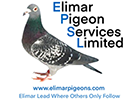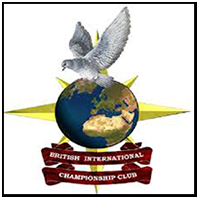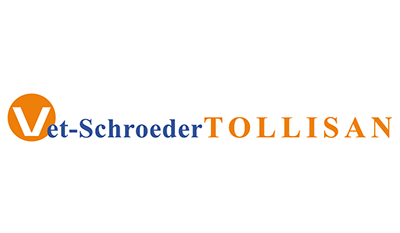“Mr PALAMOS”
aka
Mr & Mrs Ken Hine
Of
Hayes, Middlesex.
By
Gareth Watkins
Ken Hine has been winning races almost from the very start of his pigeon racing career which began in 1949. During the past 25 years Ken has attained great success racing on the south road through to Pau, Tarbes, Palamos and Barcelona. In fact the difficult Palamos race at close on 700 miles to Ken’s Hayes, Middlesex home has been won in both the 1993 and 2008 seasons. Add to these outright wins a number of other top ten finishes from this Catalonian race point and you can appreciate the significance of the opening title.

The fanciers who had the greatest influence on Ken’s early days in the sport were some of London’s all time greats – fanciers of the calibre of the late Alf Baker, Tubby Tate and Peter Titmuss, all assisted with help and advice, but it was another top class London fancier, namely George Burgess Senior who took the young Ken under his wing and who acted as mentor to the aspiring long distance tyro. George Burgess senior gifted Ken his first basket and timing clock as well as a number of his winning family of pigeons and just as importantly, heaps of good advice on stock management. So as you can see, the newcomer to the sport had what can only be described as a “flying start” and it was no surprise to anyone when he started to set about the opposition in the longer races. Initially, the birds were raced, with great success, on the north road through to Lerwick and Thurso. However, in the mid 1980’s, Ken revised his ambitions and decided to have a go at classic long distance racing on the south road in races organised by the BICC; NFC and BBC.

It was at this time that Ken moved to his present home at Hayes and, what with developing a new business and building a new house, time was at a premium and without the assistance of his brother in law Frank Hemmings and friend Jeff Byles who both helped around the loft with cleaning, training and exercising the birds, life would have been very much more difficult during this transition period.

Nevertheless, the switch to south road racing was achieved almost seamlessly as the birds, at that time based largely on pigeons from Peter Titmuss, Eric Cannon, Fear Brothers and A.R Hill , continued in the same manner as they had on the north road – winning long distance races.

So to the present day, and the lofts at Hayes which are set in a large paddock at the rear of the family bungalow. These are extensive as there are three main lofts, one measuring 30 ft x 10ft with four sections, a second measuring 70 ft x 10ft with eight sections and a third measuring 16 ft x 10ft with two sections. All three lofts are absolutely bone dry with excellent ventilation and positively no overcrowding. Ken feels that, along with plenty of sunlight, these are the essential factors required if a successful home environment is to be achieved. To this ends a total of just 160 birds are housed and this figure includes old bird racers, stock birds and youngsters. All lofts are cleaned daily 365 days a year and this is where Ken is greatly helped by friend Jeff Byles who cycles to the lofts every day rain, snow or shine.

Stock birds and the yearling racers are usually mated in mid February with the birds destined for the long distance classic races mated a little later in early March. The birds are treated for cocci, canker and worms before pairing and are vaccinated against paramyxo virus annually. All birds are allowed to rear a youngster and these are weaned into a race basket where they are taught to eat and drink. This early education sets them up for later in life as the stress factor is greatly reduced when they are basketted for subsequent races.
The old bird racers are raced on the widowhood, round about and natural systems and Ken has achieved great success in distance races when employing all three systems. Once the good weather arrives in late March the racers are allowed their liberty and are slowly brought up to racing condition by twice daily home exercise. Once the first round youngsters are away, the old birds get a few tosses out to 40 miles prior to being entered in the early season races. The usual procedure is for the long distance team to be entered in two or three of the shorter channel races in preparation for their target race. This, along with the daily exercise and regular 40/50 mile training tosses helps bring them into the right condition for the longer races. All birds are hopper fed on the appropriate Versele Laga mixes and the long distance candidates also receive a treat of Red Band Conditioner and some peanuts in the final days build up to their target race. The racers are never “broken down” by the use of a depurative mixture but receive the full racing mixture at all times.

As mentioned earlier, the bloodlines now housed are a mixture of birds from Peter Titmuss, Fear Brothers and some Deweerdts via Mark Gilbert. They were above medium sized and in fact some of the Palamos pigeons could be described as large but all were well balanced in the hand and in perfect condition as you would expect. During our visit we handled more than a dozen pigeons that had flown Palamos, Barcelona and Tarbes on three or more occasions winning many prizes along the way. The pick of the bunch for me was a 14 year old chequer cock bequeathed to Ken in Peter Titmuss’s will. This cracker had flown Barcelona at more than 700 miles on a number of occasions for Peter and was still 100% fertile, clearly indicating the excellent constitution and vitality that these birds possess.
Also handled during the visit was Ken’s 2008 winner of 1st Open BBC Palamos when only two birds were clocked on the winning day. Ken clocked this blue cock at 20.59 on the second evening, following an early morning liberation on the previous day. Once again he handled well above medium sized with excellent feather quality and a nice bold head. Ken also clocked a second bird some time later to win 5th section 13th Open and in the BICC Barcelona race clocked his single entry to win 5th section 29th Open.

Before closing this article I’m sure Ken would want me to express his thanks to all those fanciers who have helped him on the long road to his many long distance successes. Amongst these are the aforementioned greats:- George Burgess Senior, Alf Baker, Tubby Tate, Peter Titmuss, Stan Biss, Eric Cannon, Ken’s now departed brother in law Frank Hemmings and not forgetting the present day class of ace fanciers Gary Inkley and Mark Gilbert and of course Ken’s good friend Jeff Byles.
Well done and congratulations Ken on a terrific record of long distance successes. Here’s hoping you will make it a hat trick of wins from Spain before you hang up your scraper.


















